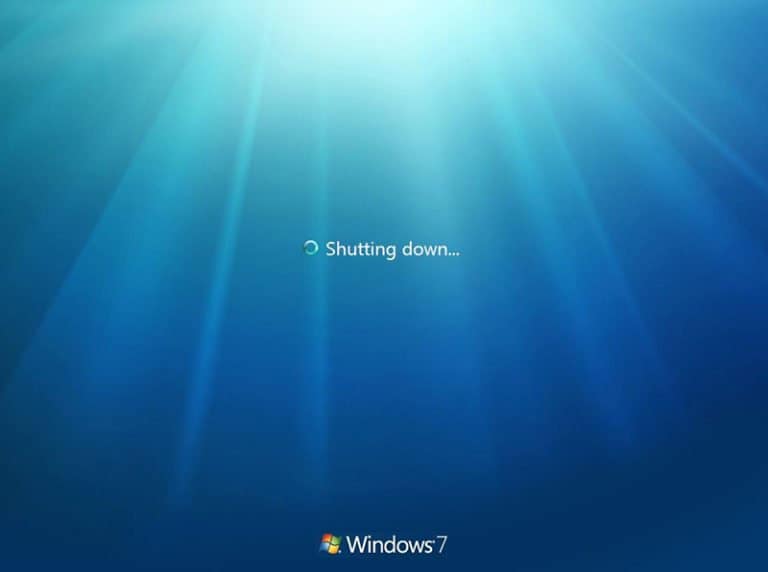End-of-life, end of the line, done, finished, finito. Today Microsoft stops supporting Windows 7. The lifecycle of this operating system has come to an end. With around 369 million PCs running on Windows 7, this end is far too early, but it its for a reason that Microsoft has announced it well in advance.
The end of Windows 7 was announced a long time ago by Microsoft, even before the end of Windows XP in 2014. The end date of Windows 7 was set on January 14, 2020. Today Windows 7 is no longer officially supported by Microsoft. That means there won’t be any more security updates for this operating system. Windows 7 was the most popular Windows operating system ever, which now makes it quite the liability.
Starting from today, running Windows 7 is a huge security risk. The more time passes after January 2020, the bigger the risk will be. Every new security leak that is found in Windows 7 will no longer be patched by Microsoft. In 2014 there was a similar scenario when Windows XP came to an end, which was also still a very popular operating system at the time. In the end, Microsoft did make a few exceptions, such as fixing a security vulnerability that was abused by the American NSA. Microsoft was afraid of a second WannaCry if this leak would be abused more often.
Windows 7 has a market share of 23.1 percent in Europe
If we look at all Windows computers operating worldwide, Windows 7 still represents 26.79 percent of all Windows computers. Of course this includes less developed countries, if we only look at Europe the market share is 23.1 percent. Even in Microsoft’s home market, the United States, 17.1 percent of all PCs still run on Windows 7.
An estimated 369 million PCs are still running on Windows 7.
Worldwide, hundreds of millions of PCs are still actively using Windows 7. In September, Microsoft announced that there are 900 million PCs running Windows 10. Although the figures come from different sources, we can estimate the total number of Windows 7 PCs. Windows 10 has a worldwide market share of 65.4 percent. If we calculate that back to 26.79 percent, there are 369 million Windows 7 computers.
What to do with Windows 7 PCs?
For consumers and small business users, there’s not that much going on. If you search in Google you will find a Windows 10 Pro license for less than 15 euros, Windows 10 Home is even cheaper. Users can easily upgrade to Windows 10 for a small fee. With a bit of luck you can even do it for free. Some Windows 7 and Windows 8 users still claim to be able to upgrade for free.
As a medium or large company, the problem is a bit bigger. Here you have to deal with enterprise licenses and a complete network with tens, hundreds or even thousands of PCs. Such a migration process to Windows 10 takes at least a few months, because it needs to be well prepared and tested. In the meantime you don’t want your company to run the risk of being hacked, getting infected by cryptolockers or other malware because Windows 7 is no longer secure.
Buying support is expensive
Microsoft offers another solution for these companies for the next three years. Companies can purchase extended Windows 7 support which includes security updates. However, this is not cheap and Microsoft has chosen a strategy to make it less attractive each year: the first additional year of Windows 7 support costs 50 euros, the second year 100 euros and the third year 150 euros. Note, this is per system. If you have 5000 workstations with Windows 7, this will cost you 250.000 euros, just for the first year. Microsoft also requires that a migration process is started, because it is not an extension period, it’s a bridging period for the migration process. After those three years, Windows 7 will definitely come to an end, even for companies with deep pockets.
Windows 10
We cannot think of any reasons not to upgrade to Windows 10 anymore. There is hardly any software that doesn’t run on Windows 10, but which does run on Windows 7. This will only sporadically be the case with real legacy software, but in general, all Windows 7 software also works on Windows 10. Furthermore, Windows 10 is not radically different from Windows 7. Everybody should have forgotten about the detour that Microsoft took with Windows 8, by now.
There is also more good news when you reach Windows 10: for the time being, this is the latest version of Windows and Microsoft has indicated that the goal is to continue to develop and support this operating system for years to come. So for now, there will be no Windows 11 or 12. When the migration from Windows 7 to Windows 10 is finished, it is a matter of keeping up with the Windows updates and you will be fine for many years to come.
If you are in a management position and are now faced with the end of Windows 7, while your IT department, supplier or partner has said nothing. Then it’s time for a serious conversation, because the end of Windows 7 should not be a big surprise.
